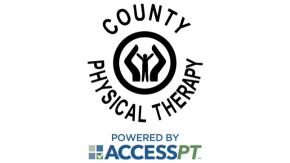Impaired Balance
Impaired balance is a common complaint by patients and may be related to many different diagnoses managed with physical therapy. Frequently these individuals have been referred by another physician or caregiver who has safety concerns related to these symptoms. Patients may complain of unsteadiness, dizziness, and/or vertigo, and the medical team becomes responsible for identifying the possible causes of these symptoms to help address them. Because balance disturbances manifest in many ways, treatment requires a strong understanding of the underlying systems that influence a person’s steadiness.
How does my body regulate balance?
In general, a sense of balance is the result of feedback from multiple systems in the body working together to help a person remain steady in the position they desire. The visual, vestibular (inner ear), and proprioceptive systems of the body are the primary sensory systems that work to create balance. The body must successfully interpret the feedback provided by these systems and then decide how to move to preserve balance in the face of a destabilizing activity (walking, playing sports, lifting objects, etc.). Individuals complaining of balance limitation often have problems with one or more of these systems.
What are some causes of balance issues?
The visual system is often most familiar as it helps us see the world around us. Someone may experience degradation in balance following a change in visual acuity as he/she would be less able to see and interpret their surroundings. Awareness of potential hazards could be reduced, which can increase the risk for falls associated with tripping. Night vision often worsens with age, leading to falls in the elderly such as during a nighttime bathroom trip. Vision may also be affected by conditions such as diabetes or hypertension.
The vestibular system helps the body understand three-dimensional motion, sensing linear and rotational movement of the head and body. Critically, the vestibular system works closely with the visual system to stabilize vision as the body moves via a sophisticated set of neural reflexes. This allows participation in complex activities, such as running to catch a ball or looking around while walking, without losing visual clarity. When a medical condition affects the vestibular system, impairment of these reflexes leads to unsteadiness and difficulty with daily activities. Some conditions, such as Benign Paroxysmal Positional Vertigo (BPPV), provoke a nauseating, spinning visual symptom with certain movement changes which leads to difficulty and reduced safety with sitting up from bed and with bending motions.
The proprioceptive system relies on small sensors within the tendons of the muscles in the body to help understand muscle length and the forces experienced during activity. During most standing activities, these sensors in the ankle, hip, and trunk stabilizing musculature are active to help a person remain upright. The system is then able to utilize reflexes to automatically activate the appropriate muscles to maintain balance. For example, if a person is standing while riding a bus and the bus begins to slow for the next stop, the sensors will notice a change in muscle force and length and shift his/her weight accordingly. If this was an especially rapid or unforeseen stop, the system may instruct the person to lean or even take a step to counteract the movement and maintain balance. If someone is deconditioned or having muscle control limitations, such as after a stroke, this response system can be especially adversely affected. Diabetes and peripheral neuropathy can also diminish proprioceptive awareness in patients.
How can balance impairment be treated?
Treatment of balance impairment often involves identifying the specific systems involved with the person’s complaints. Interventions to overcome multiple problem areas may be required in some cases. An elderly patient who complains of falling at home may require exercises to strengthen her trunk and leg muscles to improve her steadiness but may also benefit from education about taking her time with positional changes to avoid lightheadedness. Living space modification, such as removing clutter in the home and placing a night light in her hallways to improve visibility after dark, may also be helpful.
Physical therapists are uniquely suited for working with patients with balance deficits given their strong understanding of the musculoskeletal and neurological systems of the body and their interactions. They also have experience with adjusting living environments to improve safety and minimize injury risk.
If you feel concerns about balance for yourself or a loved one, please don’t take those concerns lightly. We have seen too many patients who “brushed aside” that worry and then ended up taking a nasty fall resulting in a broken bone. Call your local ACCESS PT office and we’d be happy to discuss options for treatment. We have a number of convenient options, which include in-clinic care, or in some areas, a therapist can visit your home.



